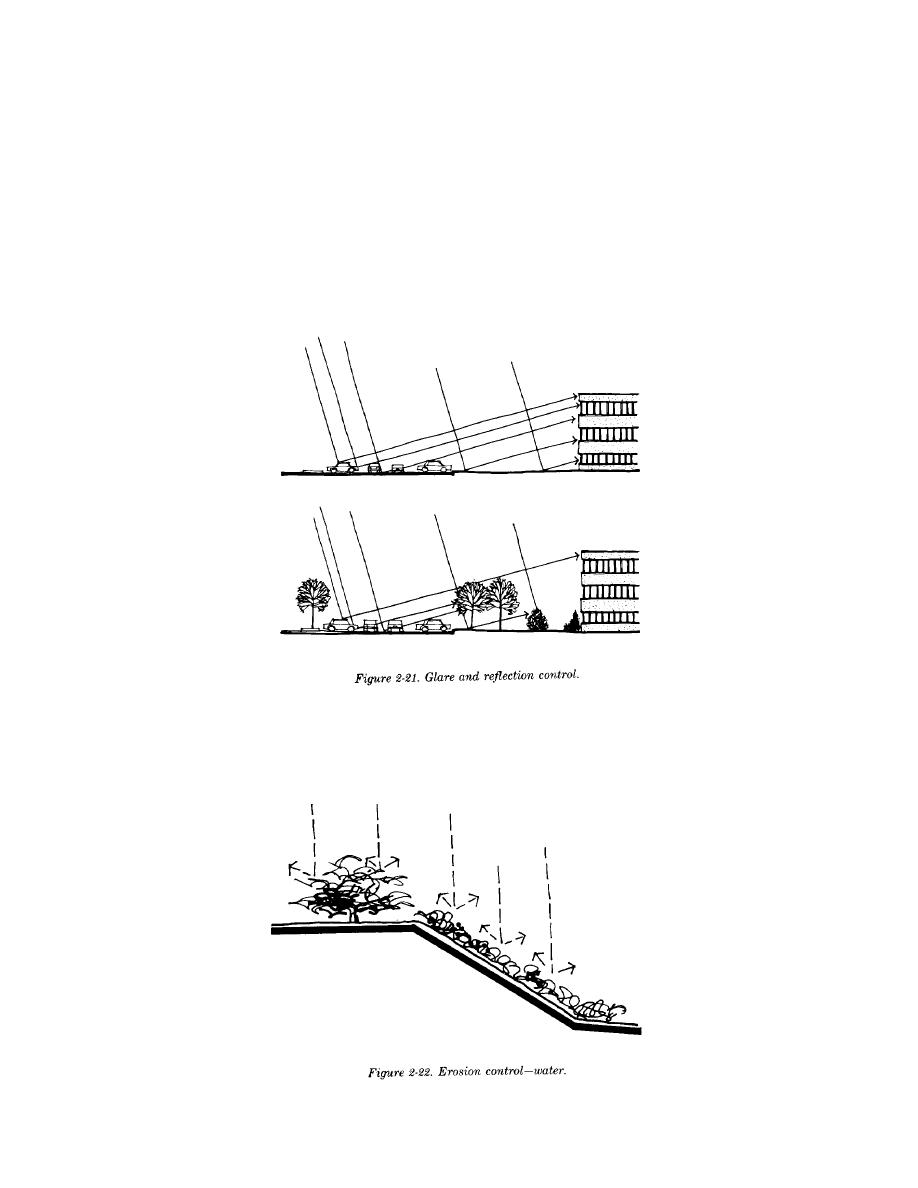
TM 5-803-13/AFM 126-8
d. Temperature modification. Vegetation reduces the
Shade in parking areas may be introduced by planting
ambient air temperature by the cooling effect of tran-
large-growing trees about 40 to 50 feet apart. Trees
spiration (evaporation) of water through the leaves and
which exude gummy substances or attract insects should
by shading the ground. Vegetation covering the ground
not be selected for use in parking areas.
tends to stabilize temperatures by reducing extremes,
whereas paved surfaces usually tend to increase tem-
surfaces or car headlights can cause visual discomfort.
peratures in the surrounding air by reflecting absorbed
Plants can effectively soften glare and reflected light
heat. Shade trees are important for comfort practically
while adding to the aesthetic quality of an area. The
everywhere in the United States. In all areas except
degree to which plants are effective in absorbing and
genuinely subtropical and tropical areas, deciduous trees
deflecting glare depends on their height, density and
are best for this purpose because they furnish shade only
location (fig 2-21).
during the summer and permit sun to penetrate in winter.
f. Erosion and dust control.
ground covers and leafy deciduous or evergreen plants.
(1) Water is the most significant agent of soil ero-
Runoff or sheet erosion is best controlled by grasses and
sion. The two basic types of water erosion are caused by
other plants with very fibrous root systems. (fig 2-22).
splash and runoff. Splash erosion is best controlled by
2-15



 Previous Page
Previous Page
